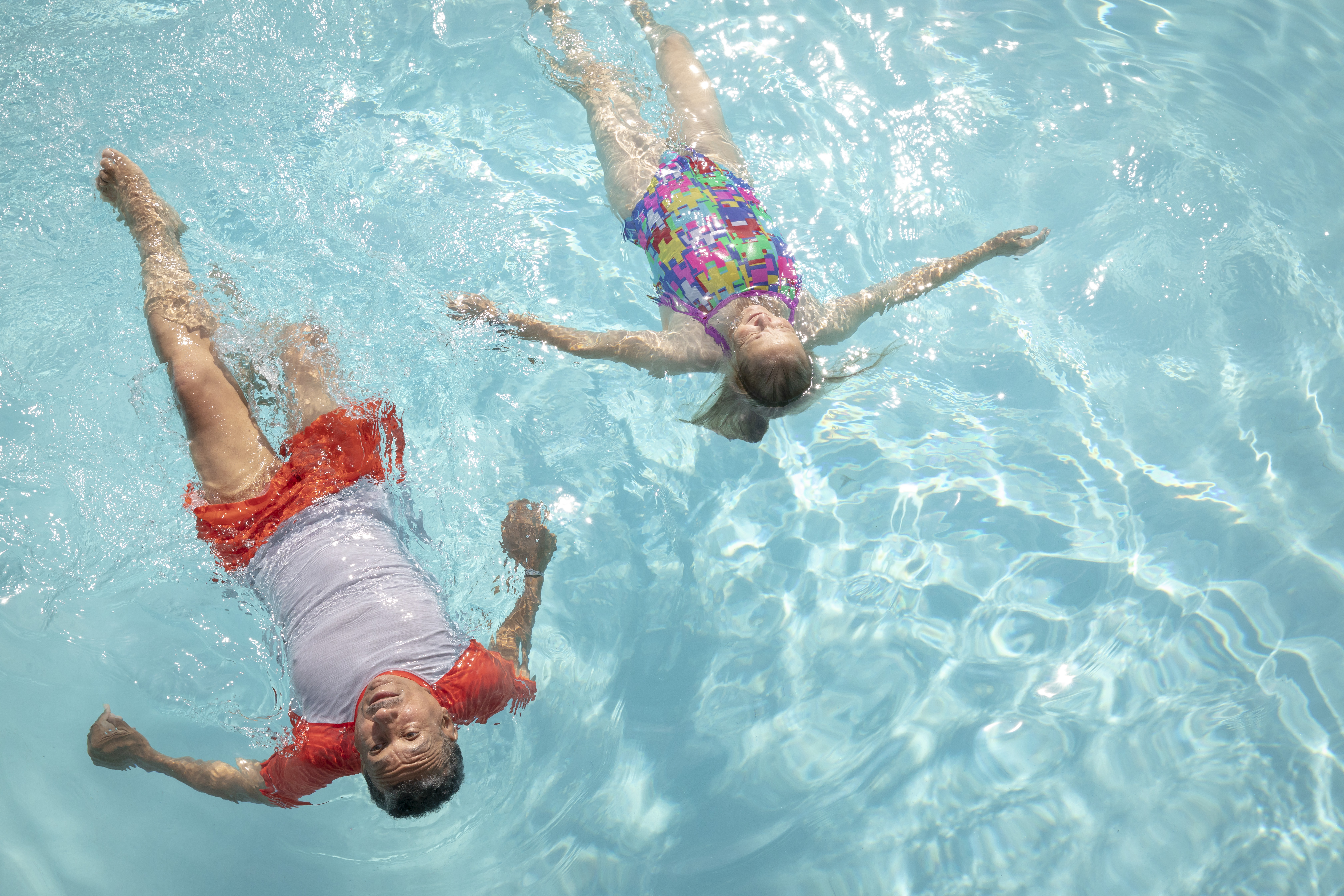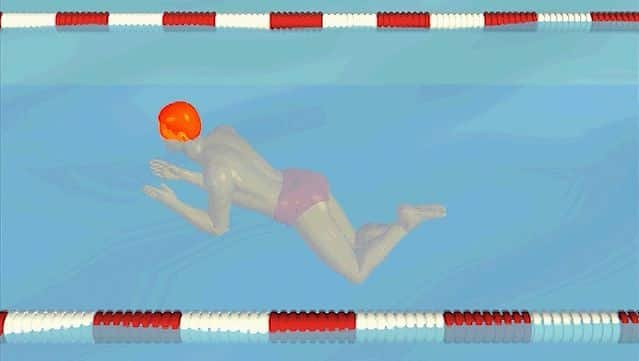Swimming starts are crucial in competitive swimming. They can make or break a race.
In this post, we’ll explore the skills needed for a successful swimming start. A swimmer’s start sets the tone for the entire race. It’s a blend of technique, strength, and speed. Understanding these skills can help swimmers improve their performance.
Whether you’re a beginner or an experienced swimmer, knowing what skills to focus on can make a big difference. So, let’s dive into the key elements that contribute to an effective swimming start.
Body Position
In swimming, the body position during the start is crucial. A well-executed start can give a significant advantage. The body position impacts speed and efficiency. Let’s explore two key aspects: streamlined posture and head alignment.
Streamlined Posture
A streamlined posture reduces drag. This is vital for a fast start. Swimmers must keep their body straight and tight. Arms should be extended above the head. Hands should be together, forming a point. This reduces water resistance. Legs should be straight and toes pointed.
Maintaining this posture requires core strength. Engage the abs and glutes. This helps keep the body firm and aligned. A good streamlined posture can shave seconds off your time.
Head Alignment
Head alignment is another key factor. The head should be in line with the spine. Look down towards the bottom of the pool. This position helps maintain a straight body line. Avoid lifting the head too high. It creates drag and slows you down.
Keeping the head aligned with the body also aids in balance. It ensures an efficient entry into the water. Practice this position to improve your swimming start.
Reaction Time
Reaction time is crucial in competitive swimming. It can be the difference between winning and losing. Swimmers must respond quickly to the start signal. A fast reaction gives a head start. This section discusses how to improve reaction time.
Anticipating The Start Signal
Swimmers need to anticipate the start signal. This requires intense focus. Pay attention to the starter’s movements and the sounds. Practice helps in recognizing patterns. Staying calm and relaxed is key. Nervousness can slow reaction time.
Improving Reflexes
Reflexes play a big role in swimming starts. Quick reflexes help in reacting faster. Practice drills that mimic the start signal. Include exercises like jump starts. Consistent training enhances reflexes. Simple exercises like catching a ball can help too. Include these in your routine.
Explosive Power
Explosive power is essential in swimming starts. It enables swimmers to quickly launch off the blocks and into the water. This quick burst of energy sets the tone for the entire race. Swimmers need to maximize their speed from the very beginning. A strong start can make a significant difference in race outcomes.
Leg Strength
Leg strength is crucial for a powerful swimming start. Strong legs help push off the blocks with great force. This initial push-off propels swimmers forward quickly. Leg muscles, like the quadriceps and calves, play a key role. Regular strength training can enhance leg power. Exercises such as squats and lunges are beneficial. These exercises build muscle and improve explosive strength.
Core Engagement
Core engagement is vital for maintaining a streamlined body position. A strong core helps keep the body straight during the start. This reduces drag and increases speed. Core muscles, including the abdominals and lower back, must be strong. Planks and leg raises are effective core exercises. Consistent core training improves stability and power. This results in better starts and overall performance.

Credit: www.bbc.com
Dive Technique
Dive technique is crucial for a successful swimming start. It can make the difference between winning and losing. A good dive sets the tone for the entire race.
Angle Of Entry
The angle of entry is vital. It affects your speed and momentum. Aim for a 45-degree angle. This helps you enter the water smoothly. It reduces drag. A steeper angle can slow you down.
Practice makes perfect. Work on maintaining the right angle. Coaches often use video to help swimmers. They review dives frame by frame. This helps identify mistakes. Adjustments can then be made. The right angle boosts your performance.
Minimizing Splash
Minimizing splash is another key element. Less splash means less resistance. Keep your body streamlined. Point your toes. Keep your arms tight. Enter the water in a straight line. This reduces splash and drag.
A smooth entry saves energy. It helps maintain your speed. Splashing can slow you down. Practice diving techniques to reduce splash. Use drills to improve. Coaches can provide feedback. Focus on a clean entry. This will enhance your start.
Underwater Phase
The underwater phase is a crucial part of the swimming start. This phase occurs immediately after the swimmer dives into the water. It involves powerful movements that can make a difference in race times. Mastery of this phase is essential for competitive swimmers.
Streamline Position
The streamline position is vital during the underwater phase. Swimmers must keep their bodies straight and tight. This reduces drag and allows for faster movement through the water. Arms should be extended, hands overlapping, and head tucked between the arms. Feet should be together and pointed.
Check out the table below for a quick overview:
| Body Part | Position |
|---|---|
| Arms | Extended, hands overlapping |
| Head | Tucked between arms |
| Feet | Together and pointed |
Dolphin Kicks
Dolphin kicks are another key element in the underwater phase. These kicks involve a fluid motion of the whole body, similar to a dolphin’s movement. The kick starts from the hips and travels down to the feet. This creates a wave-like motion that propels the swimmer forward.
Here are some tips for effective dolphin kicks:
- Start the kick from the hips.
- Keep your legs together.
- Maintain a rhythmic motion.
- Keep your body streamlined.
Practicing these kicks can significantly improve your underwater phase performance. Consistency and proper technique are key.

Credit: www.britannica.com
Breakout
The breakout in swimming is a crucial phase. It follows the initial dive and underwater phase. This moment can determine your race outcome. Swimmers must execute it flawlessly. The transition from underwater to swimming must be seamless.
Transition To Swimming
After the dive, swimmers streamline underwater. They use powerful dolphin kicks. Timing is key here. Too early, and you lose momentum. Too late, and you face drag. The perfect breakout propels you forward. Arms should move smoothly into the first stroke.
Maintaining Speed
Speed is vital in the breakout. Start strong, then maintain that speed. Engage your core for stability. Keep strokes long and efficient. Avoid splashing. Smooth entries reduce drag. Focus on your technique. Consistent practice will help perfect it.
Training Drills
Training drills for a swimming start are crucial. They help swimmers enhance their performance at the beginning of a race. Effective drills improve reaction time, power, and strength. These components are essential for a strong, competitive start. Below are some key drills to focus on.
Reaction Drills
Reaction drills are vital. They train swimmers to respond quickly to the starting signal. One effective drill is the “quick reaction jump.” Swimmers stand on the edge of the pool. A coach gives a signal, and the swimmer jumps into the water immediately. This drill helps improve their response time to the starting signal.
Another helpful drill is the “whistle start.” The coach blows a whistle at random intervals. Swimmers must dive in as soon as they hear it. This unpredictability sharpens their reaction skills. It prepares them for the unexpected in real races.
Power And Strength Drills
Power and strength drills build the muscles needed for a strong start. One effective drill is the “explosive push-up.” Swimmers do push-ups but push off the ground with enough force to lift their hands. This builds upper body strength and explosiveness.
The “medicine ball throw” is another valuable drill. Swimmers stand and throw a heavy medicine ball as far as they can. This drill strengthens their core and arm muscles. It also mimics the explosive movement needed for a strong swimming start.
Combining these drills in regular training helps swimmers improve their start performance. Consistency and proper technique make a big difference. With time, these drills lead to faster, more powerful starts in races.
Common Mistakes
Swimming starts are crucial. A strong start can set the tone for the entire race. Yet, many swimmers make common mistakes. These errors can slow them down right from the beginning. Let’s explore some of these mistakes.
Poor Body Position
A proper body position is vital. Many swimmers fail here. They either bend too much or too little. This creates drag. It slows them down. The body should be streamlined. Arms should be in front. Legs should be behind. This reduces water resistance.
Delayed Reaction
Timing is everything in swimming starts. Some swimmers react late. This can cost precious seconds. A delayed reaction often stems from lack of focus. Swimmers must stay alert. They should listen for the start signal. A fast reaction gives an edge.

Credit: pgparks.com
Frequently Asked Questions
What Skills Are Needed For A Swimming Start?
A swimming start requires explosive power, quick reaction time, and perfect technique. Swimmers need strong leg muscles and core stability for a powerful push-off.
How Can I Improve My Swimming Start?
Improving a swimming start involves practicing diving techniques, strengthening leg muscles, and enhancing reaction time. Regularly practicing starts and working on underwater kicks also helps.
What Is The Importance Of A Good Swimming Start?
A good swimming start gives you an early lead and boosts overall performance. It is crucial for competitive swimming success.
Which Muscle Groups Are Important For Swimming Starts?
Leg muscles, core muscles, and shoulder muscles are vital for an effective swimming start. Strong muscles help in powerful push-off and stability.
Conclusion
To excel in swimming starts, focus on technique and strength. Practice regularly to improve your skills. Pay attention to each movement. The right skills can make a big difference. A good start sets the pace for the entire race. Remember, consistency is key.
Keep refining your technique. Stay dedicated and watch your performance improve. Happy swimming!



